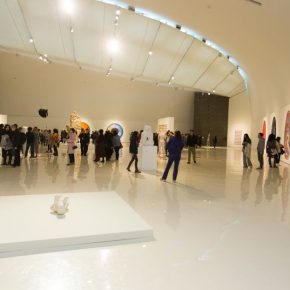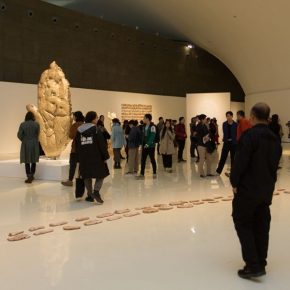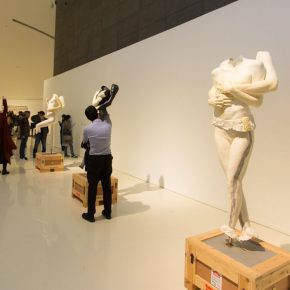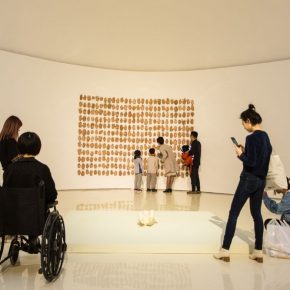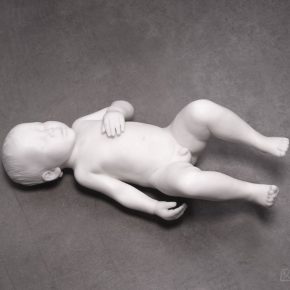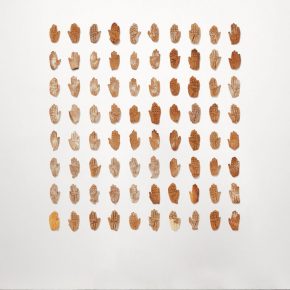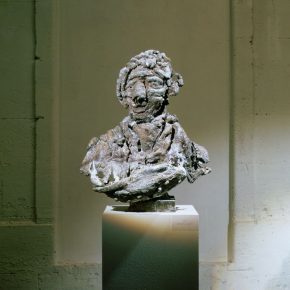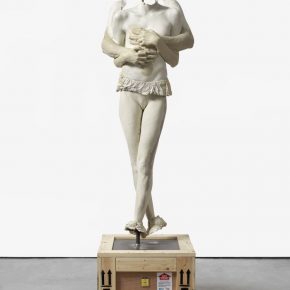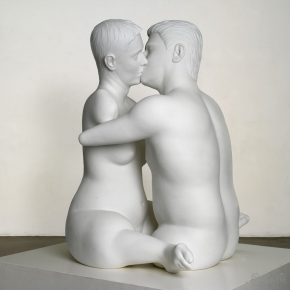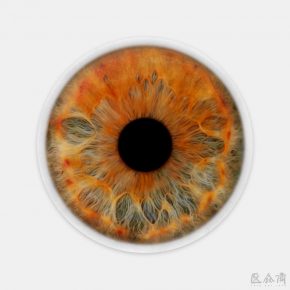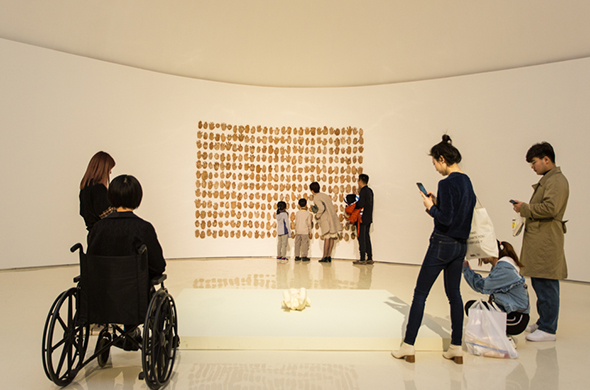
CAFA Art Museum presents a selection of work by the acclaimed British artist Marc Quinn which is the artist’s first solo museum show in China and the exhibits have been drawn from across his 30-year career to explore his enduring interest in identity from multiple series of his oeuvre. With these works Marc Quinn explores the themes of art and science, human body, emotions and perceptions of beauty while conveying his interest in identity from the concept of “body.” A bread making workshop was set up in the exhibition hall and it welcomes audiences to participate and create “bread hands” of their own, as “bread hands” is one of the core works within this exhibition and the workshop will enhance the physical experience of audiences. The exhibition was organized by CAFA Art Museum and Wang Chunchen is the curator.
Marc Quinn meditates on life starting from the body. Explorations in body, mind and related concepts have been the permanent topic of Western philosophy. Within the metaphysical ideology, under the influence of concept in relation to binary opposition, body as a sensible world is the opposite of mind/consciousness, as Plato stated, Christianity, from Descartes to Hegel think so too. Although the ideological community tried to liberate mind from the defects of body, body was not included in the main perspective of philosophy until Nietzsche who claimed that “everything starts from the body.” Subsequent phenomenology and post-structuralism have taken body as an entrance to initiate judgments on rationalism, and they have also thought on body. Marc Quinn graduated from the Department of Art History, University of Cambridge, which might enable him to find his own orientation for creations.
In addition to the discourse of “baked dough”, bioinformatics is also an important medium for Marc Quinn to explore the existence of human beings, and these works reflect the scientific spirit of his art. Cloned DNA Self Portrait 26.09.01 (2nd perspective) is an image completed by cloned DNA, not a depicted DNA. It is a plate of polycarbonate agar jelly, bacteria colonies that contain the scattered genomes of some of the artist. In scientific laboratories, this method is used for DNA interpretation. As a “self-portrait” with dual attributes of abstraction and figuration that have been taken into consideration, on the one hand, it is an abstract expression of irrationality while on another, it shows the existence of the real human body which is not only a biological individual, but also has spiritual emotions and even life trajectories. As an identity dimension of the human community, the technology of DNA disintegrates the logical orders of the religious evolution, and builds another way of identity “under the skin.” This has become a hot topic for human beings to discuss in such an era so that genre can be reedited. Under the skin, we are the same. This is similar to the artist’s ever-lasting series of works, We Share Our Chemistry with the Stars. The artist uses photorealism on the canvas to magnify a pupil to the extreme until a visual abstraction occurs. This series has also become the most magnificent work of this exhibition. Another inconspicuous luxury in the exhibition is a diamond, a yellow diamond made by carbon atoms through carbonizing, graphitizing and extracting the artist's hair. This is in parallel with the blood head of the Self. But it points to the ultimate fate of human beings. At Last, I’m perfect, the artist explained it with a strong ironic argument, “Only if carbon continuously changes and transforms can life be produced and carry on. Therefore, the perfection here actually refers to death.”
Exploring the identity from body constitutes a field of great energy in the social relationship. The sculptures in the exhibition discuss “body variation’” in various forms. Plastic surgery is the declaration and re-creation of individual sovereignty, while physical characteristics have a dominant linear relationship with identity. The prototype of Chelsea Charms is of a woman who has been known for her numerous operations in plastic surgery to obtain the world’s largest breast. The stylistic posture of this sculpture has the shape of classical art and it explores the boundary of aesthetic concepts. Zombie Boy(City) and The Beauty of Healing explore the physical tattoos or keel nicks associated with body rituals, or medical treatment or the integration of global civilization. These changes in body appearance also change an individual, but the existence under the skin is also unreservedly revealed. With the body as a medium, the artist builds an emotional connection with the world around individuals, some sculptures about “All About Love” interpret the various states of love, and discuss the definition and extension of love through the image of lovers who embrace each other in different forms. An appearance, or a hidden shell, under the skin is the essence of existence.
Just as Marc Quinn’s Self conveys an inquiry into the idealistic heroism of traditional art and his work reveals his favoring of incompleteness. Besides, the broken and fragile limbs in All About Love portrays a fragile identity relationship. In addition, the male characters are just present with a hug. This disintegration is also about the expression of the absence of the male body. Is this a metaphor for the modern emotional state? Although Another Kiss has an idealistic classical tendency, the description of the object is in a state of disability. Although these concepts of physical disabilities are accepted in art, they are not necessarily the case in reality. Marc Quinn also questioned the relationship under the skin.
Under the skin is a proposition worthy of exploration. As it does not focus on a specific topic, or an individual’s doubts, instead it is concerned with the existence and extension of humanity or life as a cultural concept, and from a multi-dimensional body, which is also one of the most exquisite ways to express this. The exhibition will remain on view till May 1.
Text by Zhang Wenzhi and Photo by Hu Sichen/CAFA ART INFO
Translated and edited by Sue/CAFA ART INFO


